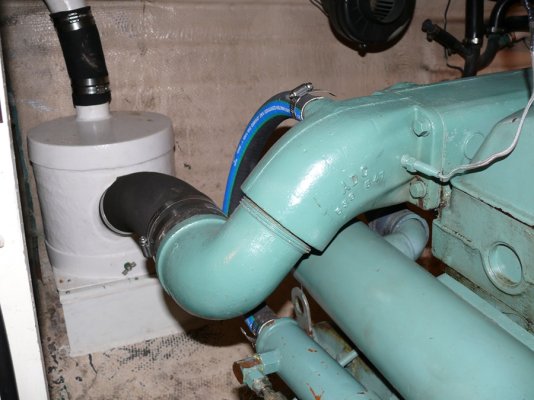Rduval
Veteran Member
- Joined
- May 11, 2014
- Messages
- 94
- Location
- Canada
- Vessel Name
- Bonaventure
- Vessel Make
- Cheer Men PT41 Europa
Hi All:
So I have a pair of 120 Ford Lehmans which currently have a very "droning" exhaust note at most any RPM.
From my engines there is about 6ft of 3.5" wet exhaust hose going to Stainless lift type mufflers which then slope very gradually downhill via more 3.5" hose to straight outlets at the stern.
I bought a Vetus DMP90 muffler and installed it inline on my stbd engine (to see what if any difference it made) and (despite Vetus assurances) it made absolutely no difference at all. The "muffler" would need significantly more water flow (at least 2-3 times IMHO) to make any real difference.
I have ordered and am planning on trying a Vetus LT90 water lift right at the stern on the port engine in a few days in hopes that the mixing right at the transom may make a difference.
Wondering what (if anything) others have done to quiet the exhaust note.
So I have a pair of 120 Ford Lehmans which currently have a very "droning" exhaust note at most any RPM.
From my engines there is about 6ft of 3.5" wet exhaust hose going to Stainless lift type mufflers which then slope very gradually downhill via more 3.5" hose to straight outlets at the stern.
I bought a Vetus DMP90 muffler and installed it inline on my stbd engine (to see what if any difference it made) and (despite Vetus assurances) it made absolutely no difference at all. The "muffler" would need significantly more water flow (at least 2-3 times IMHO) to make any real difference.
I have ordered and am planning on trying a Vetus LT90 water lift right at the stern on the port engine in a few days in hopes that the mixing right at the transom may make a difference.
Wondering what (if anything) others have done to quiet the exhaust note.

